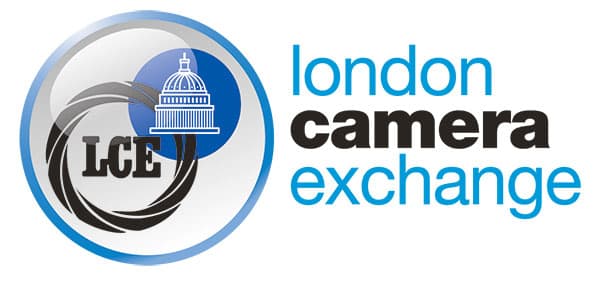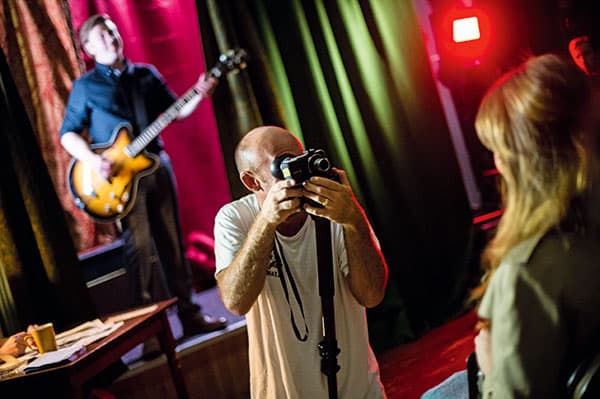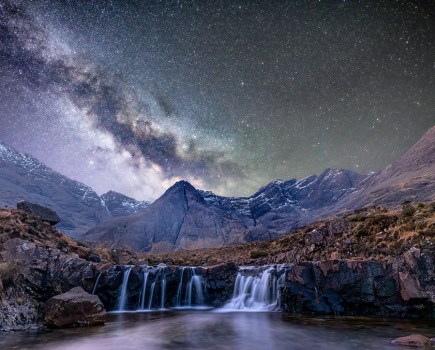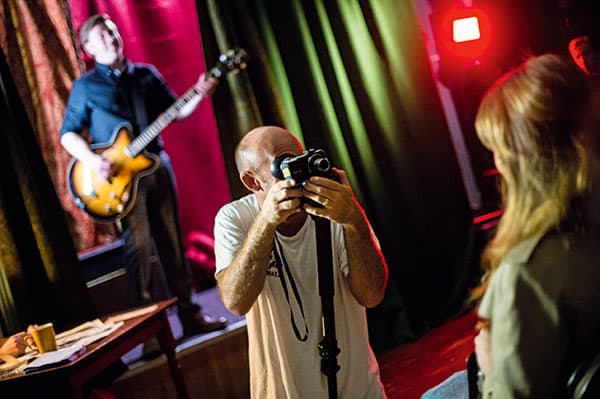
Percy Dean shooting Guy Garvey’s latest music video with a Blackmagic Pocket Cinema Camera and an old Russian lens
https://link.brightcove.com/services/player/?bctid=4690964248001
Whether you’re shooting digital film or are a photographer, your camera’s lens becomes the eye of the audience. In photography, lens choice in its very simplest form comes down to how large you want the subject to be within the frame, but there are other reasons for using certain focal lengths. A wideangle lens can be used for portraits to show the subject in its environment, or to deliberately distort facial features. Conversely, a telephoto lens can be used for landscapes to show a particular part of a vista, rather than the whole view.
In the world of cinema, the choice of lens becomes even more important. There are certain rules and conventions that have grown in the past 100 years of photography and filmmaking. We have absorbed these conventions, and the angle of view, plus the choice of lens and depth of field, has become part of the language of film that we understand without even thinking about it.
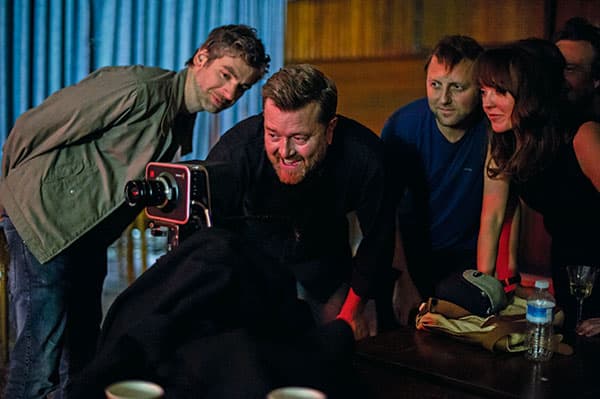
Guy Garvey (centre) looks at footage of his latest music video with director Mark Thomas (far left)
The centre of human vision has about the same angle of view as a 50mm lens when used on a 35mm or full-frame camera. So when we use a 50mm equivalent lens when shooting a film, it makes the audience feel like they are within the scene. With this knowledge, we can change the distance from the subject to change how the viewer feels. Further away is more voyeuristic, as if we are looking in on the scene, while closer can make us feel like we are right there, which adds to a feeling of intimacy, or tension, depending on what is happening.
The very narrow angle of view from a telephoto lens is like looking through a telescope. A tracking shot with a telephoto lens, that follows the subjects, makes us feel like we are spying on that person from afar.
A wideangle lens can be used to help establish a scene, allowing the viewer to survey where the action will be taking place. However, wideangle lenses can be used for other effects too. Imagine a point of view (POV) shot looking down on a subject who is looking straight up at the camera. A wideangle lens makes the subject seem very small within the frame, with a large head and a smaller body and legs, This communicates that the subject is very child-like. Switch this shot around and the POV is now of a child, looking up at tall adults who tower above the subject.
Types of lenses
So what types of lenses should you use when shooting video? Well, the answer is simply whatever you want. There are no hard-and-fast rules, and for specific effects or styles you may want to use a vintage lens that produces a particular look.
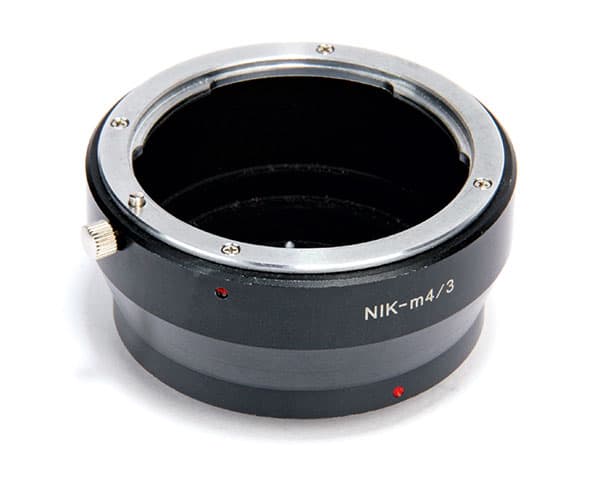
Even an inexpensive adapter, such as this Nikon F to MFT one, will allow you to use any number of lenses on the Pocket Cinema Camera
There are all manner of adapters on the market that will allow you to use older lenses on modern cameras. Inexpensive passive adapters can be purchased for as little as £10, while more expensive active versions will allow for autofocus and aperture control, and can even reduce the effects of the sensor crop.
Lenses and sensors
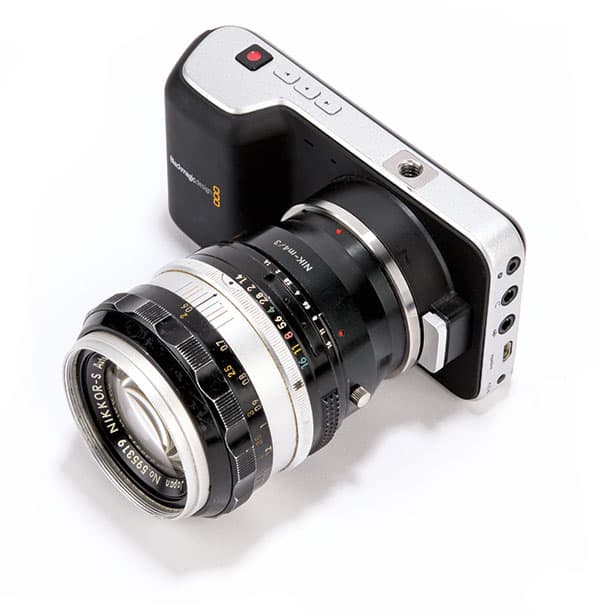
The Pocket Cinema Camera with 1960s Nikon lens
One thing to consider when choosing the focal length of the lens you are planning to use is the size of the camera’s imaging sensor. For example, the Blackmagic Pocket Cinema Camera and Micro Cinema Camera use a Super 16 size sensor, which means a 2.9x magnification effect compared to a full-frame sensor. Therefore, a 50mm lens behaves more like a 145mm lens on a camera with a full-frame sensor.
However, the Pocket Cinema Camera uses a Micro Four Thirds mount, so it can take advantage of the full range of Micro Four Thirds lenses. Using a lens such as the Olympus M.Zuiko 7-14mm f/2.8 will look like a 21-42mm on full frame. Also, as it will only be using the very centre of the lens, not only do you get a great focal-length range, but you also get the benefit of the sharpest part of the lens being used.
Percy Dean
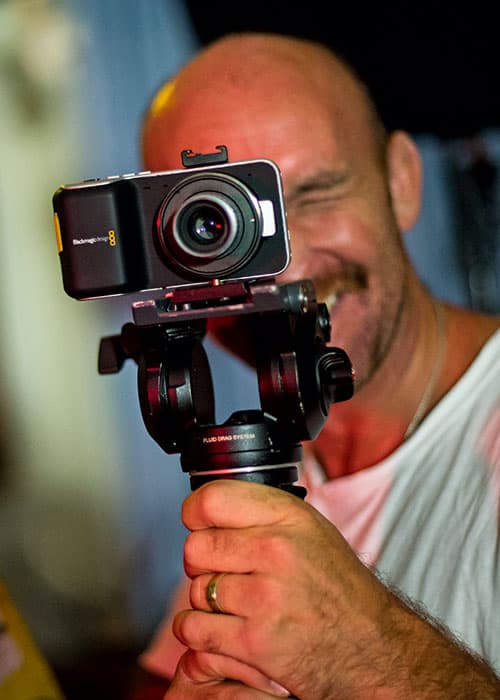
Percy has a background in extreme sports photography, and has been shooting video for the past five years.
There are many advantages to a digital camera: you don’t have to buy film; you can experiment with it for free; and you can practise cutting all the frames together. You can use weird lenses with it and a cheap mount to convert them. You can also practise freelensing. To do this, hold the lens up to the mount on the camera body and you can produce as many different effects as you want. That’s the great thing with the Blackmagic Pocket Cinema Camera – you don’t have to have a big expensive set-up.
I like to keep all the exposure settings on the camera locked, so a variable ND filter, screwed onto the end of a lens, becomes the exposure control. There are some bad filters out there, so avoid the cheap ones as the light can refract between the two plates of glass. With a standard ND filter you can get away with using more affordable versions, but as soon as you have two bits of poor glass from a cheap variable ND filter it can start to cause a lot of problems. My advice is to get the best variable ND filter you can afford.
Another way to get more light concentrated on the sensor, if you are not going to go out and buy a video-specific lens, is to get a Metabones Speed Booster adapter.
Brought to you in association with London Camera Exchange (www.lcegroup.co.uk)
